A pressure washer hose is an important part of your pressure washer setup. Without one functioning properly, your entire pressure washing experience will be ruined. And it can happen that your pressure washer hose may get damaged or worn out. This can happen due to everyday wear and tear, or even due to negligence or accidents.
However, in such a scenario, do you really need to buy a new hose?
Well, the answer is no, as there are different ways in which you can repair a pressure washing hose. Thus, in this blog, we have discussed a comprehensive guide on pressure washing hose repair.
So, if you are someone who is interested in preserving and making the most out of your hose instead of investing in a new one, this blog is for you.
Can You Repair a Pressure Washer Hose?
Yes, pressure washer hoses can be repaired in most instances. However, the feasibility of repair depends on the severity of damage. Small leaks, punctures and minor tears can often be repaired without any hassle.
When is hose replacement necessary?
Hose replacement may be necessary if your hose is severely damaged. Some types of damage may include large tears, extensive wear and tear, or damage to critical components like the inner lining or reinforcement layers.
Feasibility of repair vs replacement
Repairing a pressure washer hose is usually more cost-effective than replacing the entire hose, especially for minor issues with the hose.
Also, while using a fixed hose, take note of certain safety precautions. The hose must remain stable and be strong enough to endure the force generated by the pressure washing machine.
Understanding Pressure Washer Hose Repair Kits
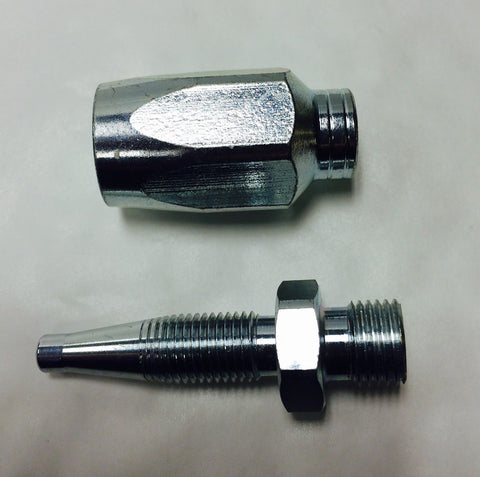
A pressure washer hose repair kit is a set of tools and materials that you can get to fix your pressure washer hose. You can usually buy it from the place you purchased your pressure washer hose from. It includes components like hose fittings, clamps and also replacement hose sections.
There are also different types of repair kits which are tailored to specific hose sizes, types of damages like leaks and punctures, and other different types of damage. Some hose repair kits can also come with sealants and adhesives for cracks or tears that need to be glued or taped off.
In addition to this, having a repair kit is convenient because it allows for quick fixes without having to replace the entire hose. Thus, you can think of a hose repair kit as a first-aid for your hose.
Common Pressure Washer Hose Repair Issues
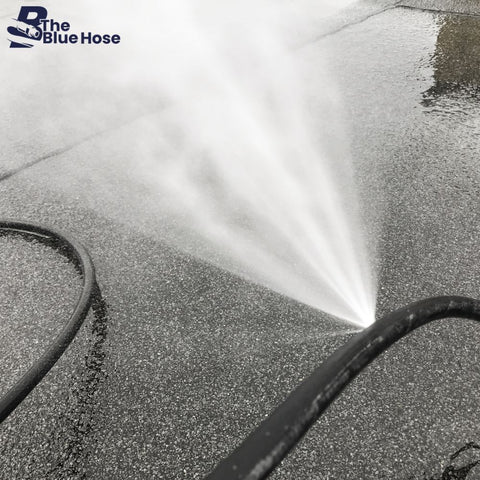
Pressure washer hoses can often run into different issues which include leaks, punctures and wear. Leaks can occur due to damaged fittings or even worn-out seals. On the other hand, punctures can result from sharp objects or even from abrasive surfaces. Wear and tear can lead to weakened areas or cracks in the hose over a period of time.
In addition to this, these issues can be caused by various factors such as rough handling, exposure to harsh chemicals or extreme temperatures, or simply normal wear from frequent use. Thus, timely pressure washer hose repairs are important as they help prevent further damage and maintain the efficiency and safety of your pressure washer.
For example, a leaky hose fitting can lead to reduced water pressure and wasted water. This will affect the effectiveness of cleaning tasks. In addition to this, a punctured hose can also lead to water spraying in different directions or even cause injury if not addressed promptly.
DIY Pressure Washer Hose Repair Methods
There are also certain DIY pressure washer hose repair methods which can help you repair your pressure washer hose without needing any professional intervention.
Some DIY methods for repairing your hose are:
1. Patching
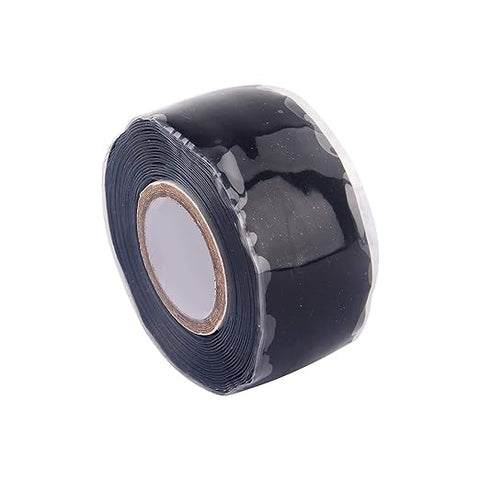
For this method, you will need a hose repair tape or rubber patch, scissors, cleaning solution, and rag.
Next, follow the steps outlined below.
Step 1 - Clean the damaged area with a cleaning solution and rag to remove dirt and grease.
Step 2 - Cut a piece of hose repair tape or rubber patch slightly larger than the damaged area.
Step 3 - Apply the patch firmly over the damaged area, ensuring good adhesion and covering the entire affected area.
Step 4 - Press down firmly to ensure proper sealing.
2. Splicing
For this repair method, you will need a hose repair kit with splicer, hose clamps, utility knife and pliers.
Next, follow the steps outlined below.
Step 1 - Identify the damaged section of the hose and then mark it for cutting.
Step 2 - Next, you should use a utility knife to carefully cut out the damaged section of the hose.
Step 3 - Insert one end of the splicer into each end of the remaining hose sections.
Step 4 - Secure the splicer in place with hose clamps, ensuring a tight and secure connection.
Step 5 - Tighten the hose clamps using pliers to prevent leaks.
3. Coupling hose sections
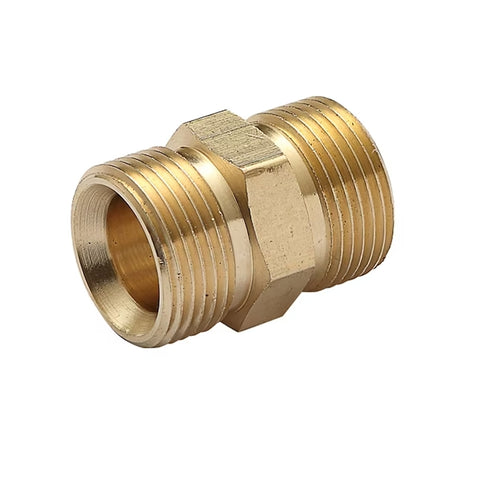
For this repair method, you will need a hose repair kit with coupling, hose clamps, utility knife, and pliers.
Next, follow the steps outlined below.
Step 1 - Cut the damaged section of the hose using a utility knife, ensuring clean and straight cuts.
Step 2 - Insert one end of each hose section into the coupling.
Step 3 - Secure the coupling in place with hose clamps, ensuring a tight and secure connection.
Step 4 - Tighten the hose clamps using pliers to prevent leaks.
Step 5 - Turn on the pressure washer and check for any leaks or issues before you resume normal use.
Watch Our Quick DIY Guide
Tips for Choosing the Right Repair Kit
When you choose a pressure washer hose repair kit, it's important to consider the following tips. This will ensure you get the right repair kit for the job.
1. Compatibility
You have to check that the repair kit is compatible with the size and type of your pressure washer hose. Kits available in the market are designed for specific hose diameters. Thus, you have to make sure you match the kit with your hose.
2. Quality
Look for repair kits made from durable materials that can withstand the high-pressure environment of a pressure washer. High-quality components like brass fittings and heavy-duty clamps are preferable for long-lasting repairs.
3. Versatility
Opt for a repair kit that offers versatility and can handle various types of damage, such as leaks, punctures, or cuts. Some kits may include different types of patches or splicers to accommodate different repair needs.
4. Ease of Use
Choose a repair kit that comes with clear instructions and requires minimal tools for installation. Kits with simple, straightforward repair methods can make the process easier and more accessible for DIY enthusiasts.
Pros and Cons of DIY Hose Repair vs. Professional Services
Some of the important pros and cons to consider about DIY hose repair vs. professional services are mentioned below.
| Pros of DIY Hose Repair | Cons of DIY Hose Repair |
| Cost-effective - DIY repair kits and materials are generally more affordable than hiring professional services. | Skill and knowledge required - DIY repairs require some level of skill and knowledge, and improper repairs can lead to further damage or safety risks. |
| Convenience - DIY repairs can be done at home without the need to schedule appointments or wait for service technicians. | Limited effectiveness - DIY repairs may not always provide a long-term or permanent solution, especially for complex or severe damage. |
| Immediate action - DIY repairs may not always provide a long-term or permanent solution, especially for complex or severe damage. | |
| Pros of Professional Services | Cons of Professional Services |
| Expertise - Professional service technicians have the training, experience, and specialized tools to diagnose and repair pressure washer hose issues accurately. | Cost - Professional repair services are often more expensive than DIY options, particularly for simple repairs or minor issues. |
| Quality assurance - Professional repairs are typically performed to a high standard, ensuring the integrity and safety of the hose. | Scheduling constraints - Depending on availability, scheduling a service appointment may result in downtime for your pressure washer. |
| Warranty coverage - Some professional repair services may offer warranties or guarantees on their work, providing added peace of mind |
Preventive Maintenance Tips to Avoid Hose Damage
There are certain preventive maintenance steps that you should take to prevent your pressure washer hose from getting damaged. Some of the important steps you need to take are highlighted below. Also read our comprehensive guide to find the perfect pressure washing hose that combines durability with long-lasting performance.
1. Inspect Regularly
Check the hose for signs of wear, abrasions, or leaks regularly.
2. Handle with Care
Avoid kinks, twists, and sharp bends when using or storing the hose.
3. Proper Storage
Store the hose coiled loosely. Also, it helps to stay away from direct sunlight or extreme temperatures.
4. Avoid Chemical Exposure
Keep the hose away from corrosive chemicals and clean it after each use to prevent degradation.
5. Use Correct Pressure
Operate the pressure washer within the recommended pressure range to prevent hose damage from excessive pressure.
Troubleshooting Common Repair Issues
Even after repairing your pressure washer hose, you can still face problems. Thus, some common troubleshooting tips for common DIY hose repair issues are discussed below. Know the essential features to consider with our detailed pressure washing hose buying guide before making your purchase.
1. Leaking after patching
Ensure the area is clean and dry before applying the patch. Also, try to use a larger patch or multiple layers if the leak persists.
2. Splicing or coupling leaks
Tighten hose clamps securely around the splice or coupling. Also, check for any misalignment or gaps in the connection and readjust if necessary.
If DIY repairs prove challenging or ineffective, it may be time to seek professional assistance.
Final thoughts
Pressure washer hoses are a very useful tool that we use to wash different types of surfaces. However, when such hoses start leaking, it can be very frustrating since it slows down the entire cleaning process.
However, the next time your pressure washer hose leaks, you will know what steps to take. From DIY repair kits to professional repairing services, there are different options available to repair your pressure washer hose and get you all set for your pressure washing experience.
Shop from our selection of top-rated pressure washer hoses in the USA here!

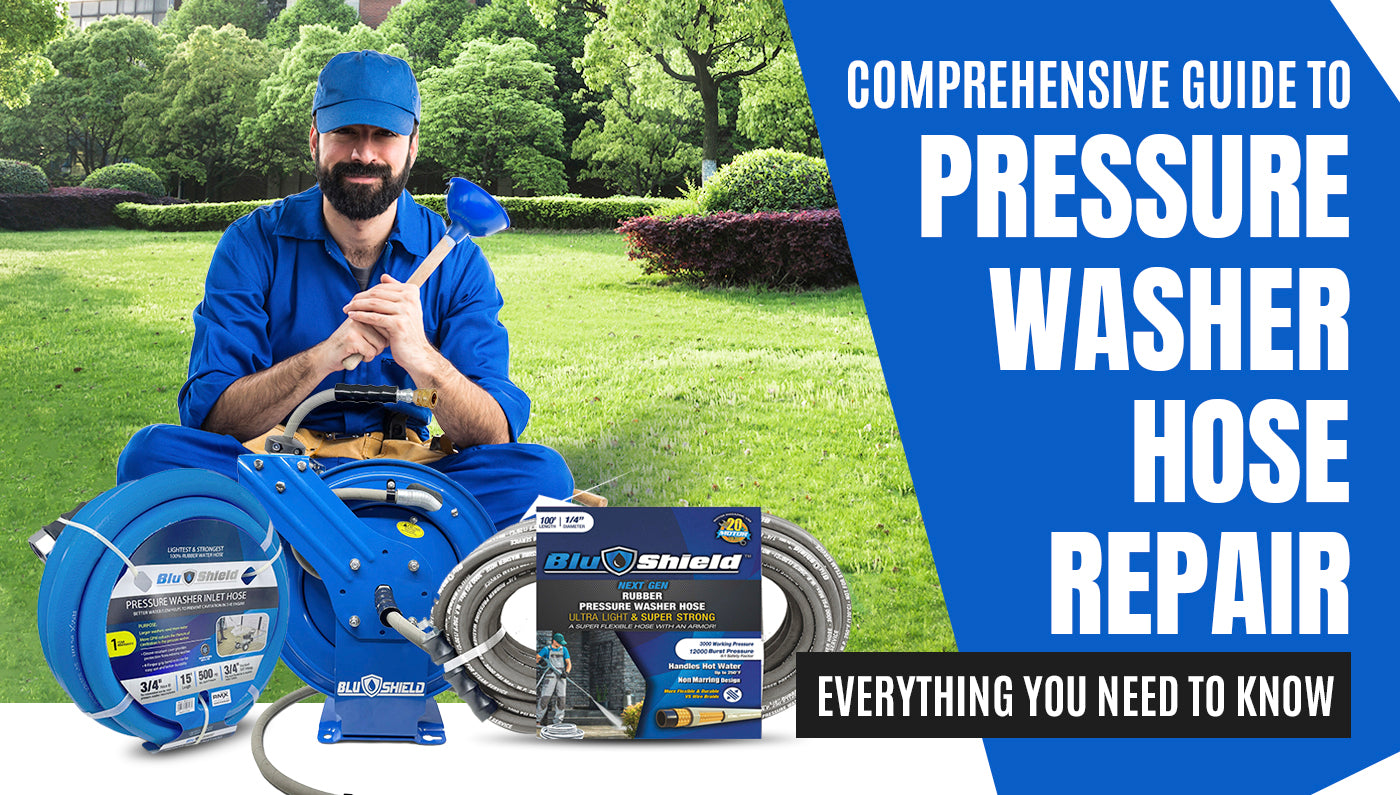
2 comments
This isn’t no help
BULL S##T